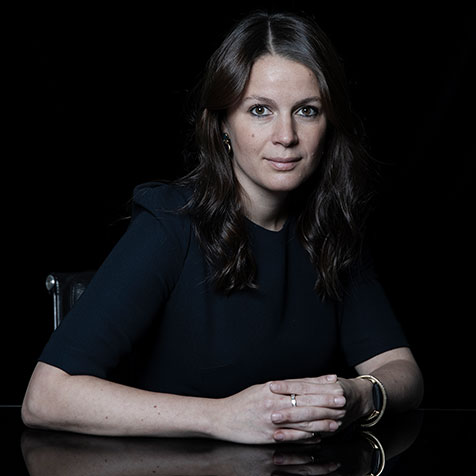Loading component...
At a glance
- According to the Australian Human Rights Commission, 71 per cent of Australians have experienced sexual harassment at some point in their life.
- As of 2018, the cost of sexual harassment to Australian society was estimated at A$3.5 billion annually, with A$2.6 billion in lost productivity.
- The number of people who formally report harassment is low due to fears relating to reputation and career prospects.
When Emily Jaksch was sexually harassed at work several years ago, she chose a path familiar to many women in a similar situation – she quit her job.
Even though she was a human resources (HR) manager at a large corporate, Jaksch didn’t report the incident because of a firmly held belief that her version of events would be disputed and her professional reputation would be ruined.
It was easier and safer, Jaksch believed, for her to stay quiet and continue her career elsewhere.

For this to be the experience of an HR manager speaks volumes. Even as she was tasked with supporting the wellbeing and safety of her colleagues, Jaksch herself felt she had nowhere to turn to when it was her wellbeing and career at stake.
“Where do I go to report that? To the board? I looked at the board and it was all men,” Jaksch says.
“I knew exactly what was going to happen. I just couldn’t put myself through that, because it wasn’t worth it. Leaving was easier – which unfortunately is what many other women do.”
Indeed, the process for reporting sexual harassment at work is often not straightforward, with the rules and guidelines confusing for both staff and employers.
The system also frequently places a heavy burden on the complainants, who are also faced with the prospect of a negative reaction from management and colleagues.
A recent high-profile example of the complexities around sexual harassment complaints is the events that took place at the Australian Parliament in February 2021.
When junior female staffer Brittany Higgins alleged that, two years earlier she had been raped by a male colleague in her workplace, Parliament House, her employer’s response was not unusual.
"The system in and of itself is clearly not working. What organisations have been doing for the past decades has not solved the problem of sexual harassment, and we need to rethink the system."
Higgins was offered a brochure outlining counselling services, before being moved to a different worksite on the other side of the country.
She ended up leaving her job, and has since talked extensively in the media about her decision not to make a formal complaint or report the alleged rape to the police, for fear of what this would do to her burgeoning career.
When Higgins did finally go public with the accusations, it sparked a long-overdue national conversation about the need for change in workplace behaviour, attitudes and policies.
A culture of silence
According to a 2018 Australian Human Rights Commission (AHRC) survey, 71 per cent of Australians have experienced sexual harassment at some point in their life.
Much of our adult lives are spent at work, and various measures to curb sexual harassment in the workplace have been in place in Australia for decades.
Yet, while the Sex Discrimination Act 1984 specifically prohibits sexual harassment at work, the AHRC survey has found that in the past five years, 33 per cent of people experienced workplace sexual harassment – 39 per cent, or two in five, of women and 26 per cent of men.
Despite this prevalence, the number of people who report workplace sexual harassment is disproportionately low.
According to the Respect@Work: Sexual Harassment National Inquiry Report 2020 issued by the AHRC, this is due to a fear of the impact on reputation, career prospects and relationships within their community or industry, as well as a complex reporting system that relies on the individual making the complaint.
The report has also found that, as well as having a devastating impact on individuals, workplace sexual harassment negatively affects workplace productivity and imposes a significant economic cost on Australian society.
A 2018 report from Deloitte Access Economics puts the cost at A$3.5 billion annually, with A$2.6 billion in lost productivity.
While there is no quick fix – and while issues of sexual harassment and workplace discrimination remain difficult for many organisations to address – new resources have been developed that may assist in challenging ingrained attitudes and disrupting the current outdated system of addressing workplace sexual harassment.
CPA Library
Leading from the top
Annika Freyer, CEO of the Champions of Change Coalition, has worked with leaders across many industries to challenge gender inequality.
She argues the current complaints-based approach should be changed so that employers take positive action and focus on prevention. This can be achieved by employing a whole-of-organisation approach to raise awareness about the impacts of sexual harassment at work.

“We consulted widely to determine what a better approach could look like. We listened to the issues to understand why sexual harassment occurs, how it occurs in different settings and how the dynamics of power and gender inequality play out to make certain people more impacted by the behaviour,” says Freyer.
“What we found was, the system in and of itself is clearly not working. What organisations have been doing for the past decades has not solved the problem of sexual harassment, and we need to rethink the system.”
The result is Disrupting the System, a report and resource that clearly outlines the steps organisations can take to prevent sexual harassment at work. It includes sample policies, frameworks, communications messaging and templates to help businesses – and, in particular, smaller businesses that may not have a dedicated HR function.
“The resource in the first instance is targeted at leaders, who should be responsible for driving change, because if they’re not, then at the end of the day, HR really does have an uphill battle to fight,” says Freyer.
“It also has very practical resources and guidelines that can be useful to HR practitioners to elevate the issue of sexual harassment to leadership and implement change.”
Jaksch has felt this particularly acutely, both as an HR professional and through her personal experience with her company’s senior leadership.
“Often the executive heads want to pretend like it doesn’t exist,” says Jaksch, “and so when we bring things to the table in a very formal sense, we’re quite often told to ‘make it go away’. It is a really weird dynamic that creates massive roadblocks for any of this stuff ever, ever changing.”
Steps towards change
Freyer says the first crucial step towards positive change is challenging the attitudes that underpin sexual harassment and violence, and working to prevent the behaviour from occurring in the first place. This is the role of leaders in any organisation, she says.
“Sexual harassment needs to be elevated as a leadership issue, and that actually means prioritising prevention. We compare this to the way occupational health and safety is reported at a CEO and board level – we need to be using all the management levers available to prevent it happening in the future.
“The second step is making the prevention of sexual harassment an issue where everybody has a role to play. There needs to be an expectation that sexual harassment should not be siloed as an HR, legal or risk issue.
“The third is putting the victim at the heart of the response and making sure they can tell their story in the way they would like to. This includes not gagging people through non-disclosure agreements.”
"There is no ‘kit’ that can fix the problem. The right approach to dealing with sexual harassment comes from terms we hear often, but that are not practised well enough yet – and that’s a ‘high-performing culture of integrity’."
Peter Wilson AM FCPA, former chair of the Australian Human Resources Institute, and director and immediate past president of CPA Australia, agrees that, while resources are useful, the true challenge lies in changing attitudes.
“You need to understand the root cause of the misconduct, and you need a demonstration of values from the top – the board and the senior leadership need to make it clear that treating all people equally is what they stand for. I’d encourage organisations to start by looking at whether they are paying men and women fairly in terms of the value of a job,” says Wilson.
“The things you should do with regard to sexual harassment haven’t changed – there is no ‘kit’ that can fix the problem. The right approach to dealing with sexual harassment comes from terms we hear often, but that are not practised well enough yet – and that’s a ‘high-performing culture of integrity’,” says Wilson.
Varied approach

When the Victorian Equal Opportunity and Human Rights Commission wanted to understand why people don’t report sexual harassment, it engaged with a wide range of workplaces, including gig economies, the arts, emergency services and local governments.
The conclusion was that a multifaceted approach is required, says Justine Vaisutis, the Commission’s head of education and engagement, and the individual needs to be at the heart of any response.
“Through our enquiry line and our research, we hear that people are very fearful of losing their job, and they are very fearful of the scrutiny that they anticipate will be applied to them. This is because many workplaces are still grappling with how to respond to a complaint in a way that does the least harm to the person making it,” says Vaisutis.
Rather than focusing any solution solely on overhauling the reporting system, people need to be able to access information in a multitude of ways and understand the various pathways that are available, she says.
"Many workplaces are still grappling with how to respond to a complaint in a way that does the least harm to the person making it."
“We’ve developed an online chat tool to give people alternative pathways, including coming to the Commission. Through this conversational chatbot, people can find out which approach best suits them – and this doesn’t mean immediately going through a formal complaint process. It is free and anonymous, and can answer many questions people may be afraid to ask,” says Vaisutis.
The chat tool could also be useful for managers and HR practitioners, says Vaisutis, because many businesses are so fearful of doing the wrong thing when it comes to handling sexual harassment complaints, they do nothing at all.
“The resource provides managers with really great evidence-based content about what to do next when someone discloses that they have been sexually harassed. It also helps bystanders know how to support someone – and that is often not through direct intervention.”
Freyer says adopting a forward-looking approach can help identify resources and tools that would be helpful in the future.
“We’ve heard that what we have now doesn’t work. The concept of balancing confidentiality with transparency is vital to creating a new system. The system has always tended to bury the issues, and we need to start bringing those issues out and holding everyone responsible,” she says.
Practical ways to address sexual harassment in the workplace
- Elevate the prevention of sexual harassment and early intervention as a leadership priority.
- Address sexual harassment as a workplace health and safety issue.
- Introduce new principles on confidentiality and transparency for sexual harassment cases.
- Inform, empower and expect everyone to speak up on sexual harassment in the workplace.
- Listen to, respect, empower and support
Source: Champions of Change’s Disrupting the System report
Legal information and support services
Centre Against Sexual Assault (CASA)
Provides confidential support and intervention to victims and survivors of sexual assault, and those who have experienced or have been affected by sexual harassment.
Phone: 1800 806 292 (24 hours)
National Sexual Assault, Domestic Family Violence Counselling Service
Open to Australians affected by sexual assault and domestic and family violence, including family and friends.
Phone: 1800RESPECT (1800 737 732; 24 hours)
Sexual harassment support and response tool
A private, interactive chat that provides pathways for information on sexual harassment.
Australian Human Rights Commission
A national service provider that offers support on issues of sex discrimination and sexual harassment. The AHRC also takes complaints.
Phone: 1300 656 419 or 1800 620 241

